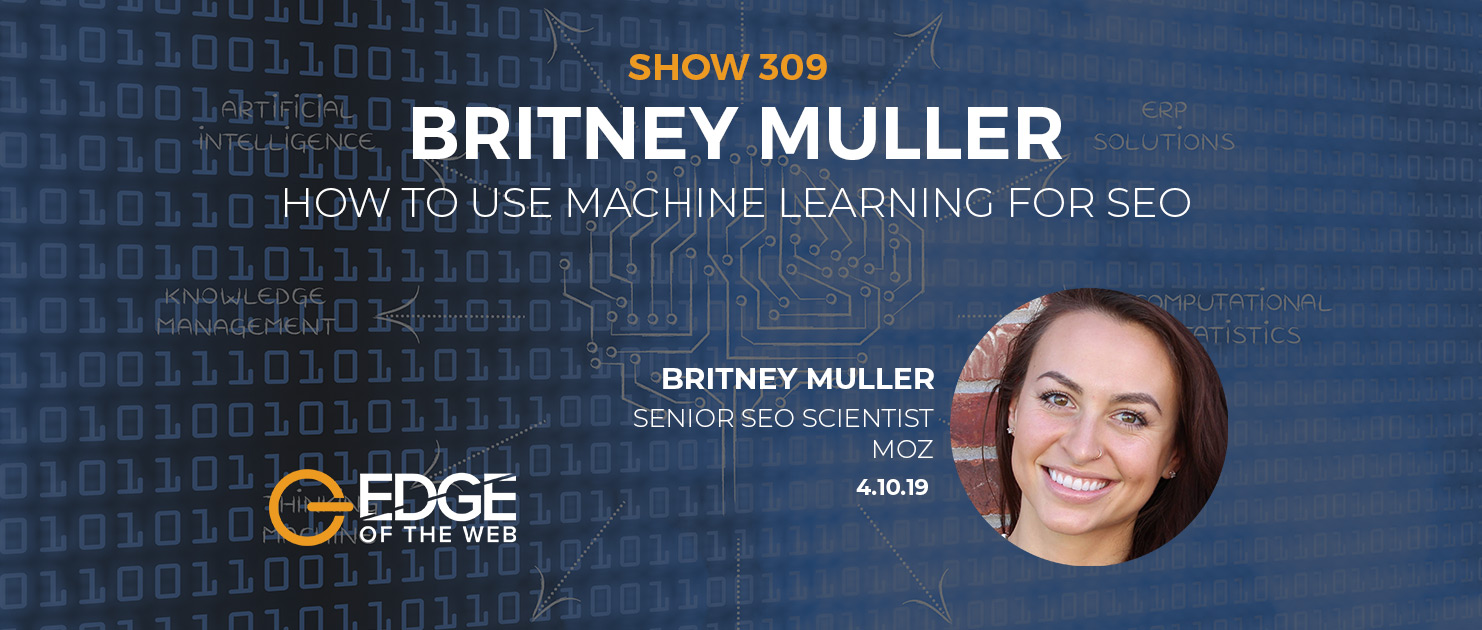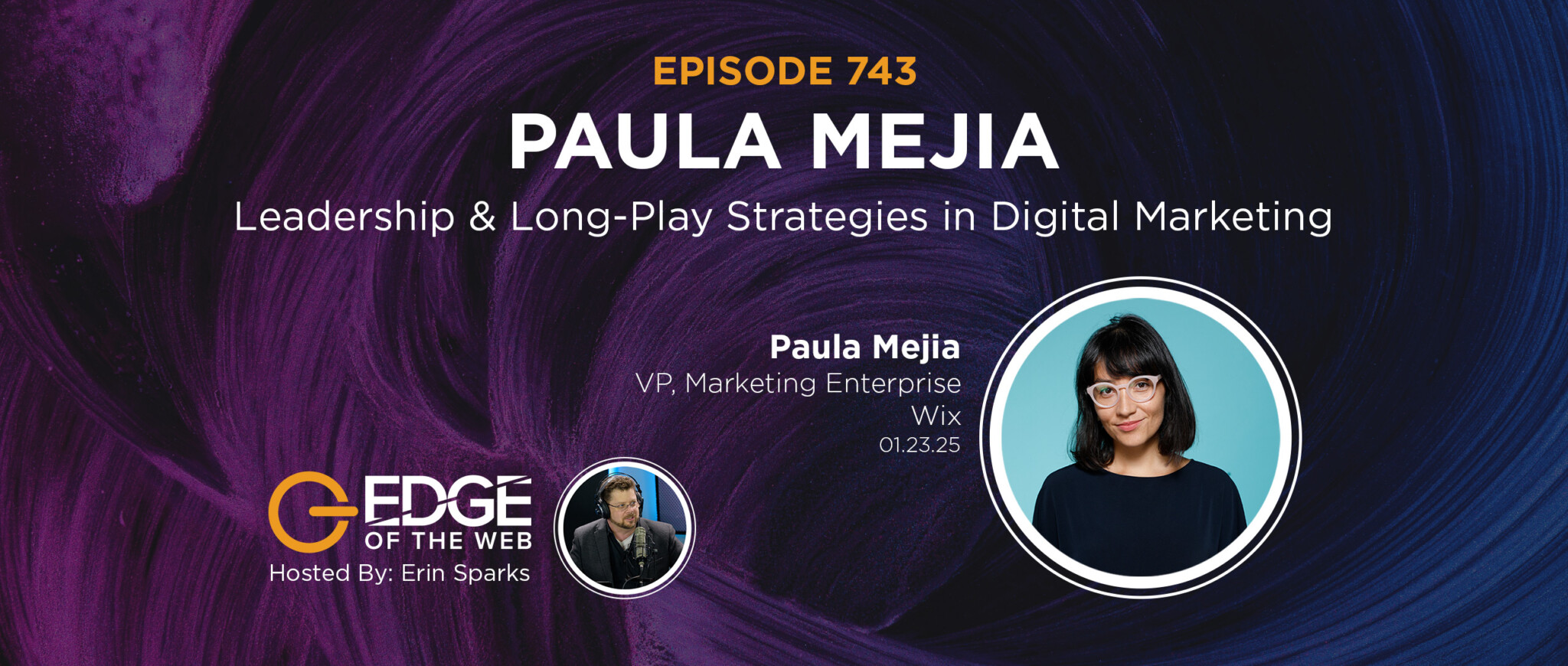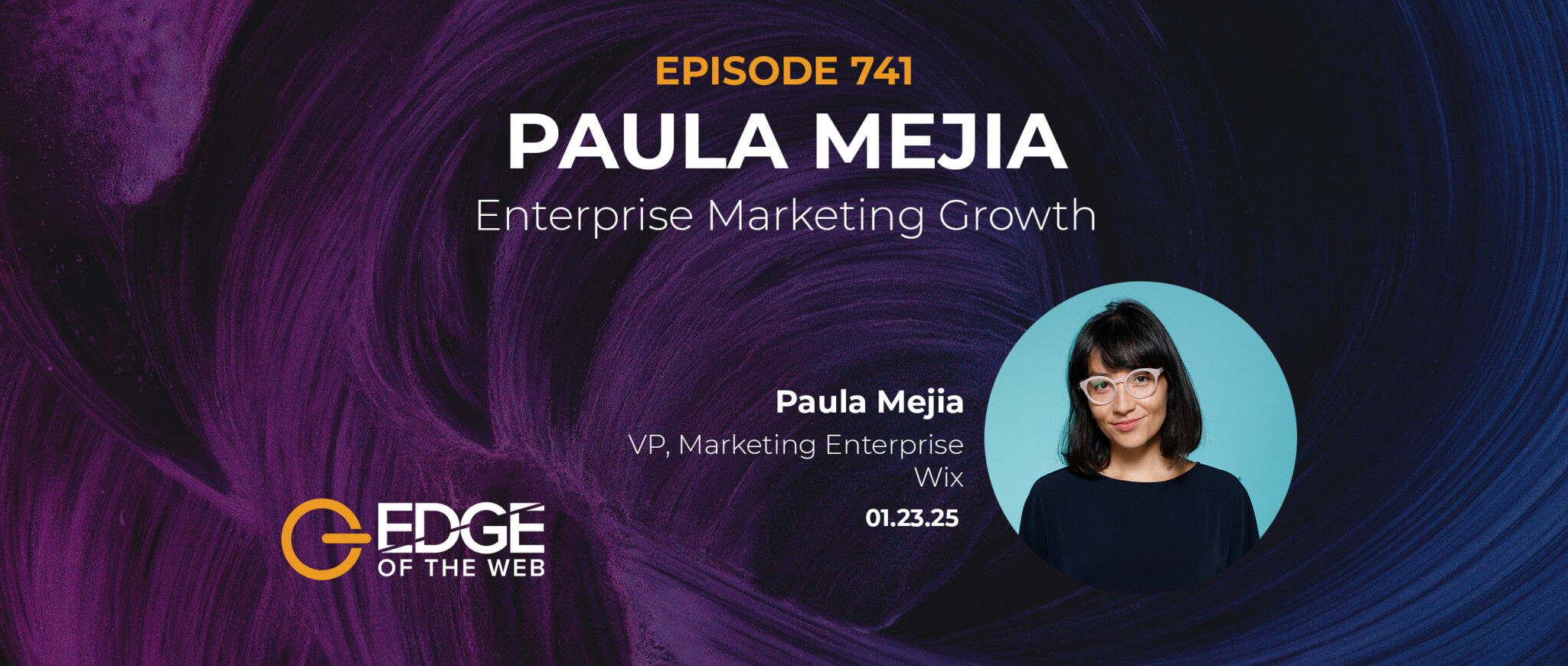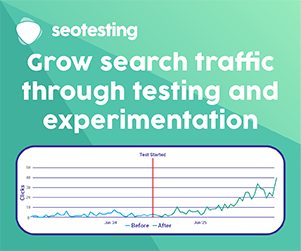When Moz Senior SEO Scientist Britney Muller sat down with Site Strategics CEO Erin Sparks and Digital Media Director Tom Brodbeck on EDGE of the Web for Episode 309 to explore how practical machine learning can be used by SEOs, here’s what we learned:
00;38:00
Supervised vs Unsupervised in Practical Machine Learning
Machine learning can be divided into two broad categories of supervised and unsupervised (although there are also semi-supervised possibilities as well). Supervised means labeled training input data, your data is specifically geared towards a known thing that you want it to produce, such as an optimized page title, a tweet or other content.
Unsupervised is when have a massive amount of data and want to see what different grouping models will come up with in terms of categories, so the output is more emergent than predetermined. This is important because the one of the key advantages of machine learning is that computers are fantastic at recognizing patterns, and will pick up on patterns that humans would never see. You just have to feed in enough high-quality data.
00:40:36
What’s Involved in Machine Learning for SEO
You could, for example, create a machine learning process to automatically analyze the meta-descriptions of sites appearing on page one results and generate a competing meta-description. That particular scenario, however, doesn’t come up with the best results. A better way to do it is to take your on-page content and run it through a summarizer model that limits the output text to a meta-description length. That has proven to be very effective. But there are many summarizer models out there and many ways to do it, so the key is figuring out how to connect the right pieces together into a workable solution.
There is a technical mindset of the type someone like JR Oakes brings to the table that helps make those connections of how to come up with working solutions. But if you’re a curious person who is interested in finding solutions, there are many pieces of the puzzle being made available for you to run with and make it happen. And the best people working in this field, like JR Oakes and Hamlet Batista, are very approachable and willing to help.
You wouldn’t want to turn these models loose on your site’s primary pages because you want to have very tight control of those, but when you’ve got a site with thousands of pages, such as an extensive Q&A forum with tens of thousands of pages of unique long-tail questions, you definitely want to automate something like meta-descriptions that you simply can’t take the time to write by hand, even if the results aren’t perfect. It’s better than leaving them blank and not doing anything.
00:45:01
Processing Power Needed for Effective Machine Learning
Processing power is a big deal in machine learning. GPU is significantly more powerful than CPU, and TPU is significantly more powerful than TPU. CPU is the central processing unit electronic circuitry you have in your basic computer and laptops. GPU stands for graphics processing unit, which is specially designed circuitry for better gaming graphics but that is now applied to wider ranges of computer workloads. TPU stands for tensor processing unit and is electronic circuits specifically designed by Google for machine learning applications and their own open-source machine learning framework called TensorFlow. Powerful processing is becoming increasingly available at affordable prices. Google is putting all this out there because they’re watching and learning from what people do with it.
00:53:18
Ready to Learn More? Try These Resources
There are tons of online courses on data science and machine learning. Andrew Ng on Coursera has some really top-notch courses. Google AI has some great data and machine learning courses, as does Google Cloud. Amazon’s Machine Learning courses used internally are now available to the public. A favorite is Harvard’s CS109 data science course available on GitHub (interesting fact: Britney managed to hack her way into that course about five years ago). But you can’t get a good grasp of it until you start trying it, even though you will break things and fail. It’s the best way to learn because that’s when the lightbulbs start going off.
00:57:51
What Bugs and What Excites Britney About the Industry?
Her biggest pet peeve is everyone talking about AI when they’re really talking about machine learning. They are not the same thing! Machine learning is a subset of AI, and real AI is still far from becoming a reality. But what’s exciting in this field is how models can be created that really impact people’s lives, not just in terms of automating mundane tasks to make life easier, but to also save lives, like has been happening in the medical field. This could be applied in other areas as well, such as environmental challenges like clean water and clean air.
Connect with Britney Muller, Senior SEO Scientist at Moz
Twitter: @BritneyMuller (https://twitter.com/britneymuller)
LinkedIn: https://www.linkedin.com/in/britneymuller/
Britney’s articles on Moz: https://moz.com/community/users/514135
Updated Beginner’s Guide to SEO: https://moz.com/beginners-guide-to-seo
Site Strategics and Your Digital Marketing ROI
If you’d like to find out the truth about whether or not your digital marketing efforts are paying off, Site Strategics can help! Find out how you’re really doing with EDGE sponsor Site Strategics and a Digital Marketing ROI Report that examines your existing SEO, content, social media, and PPC. Visit https://edgeofthewebradio.com/roi/ to get 30% off a comprehensive review of your digital assets!






















